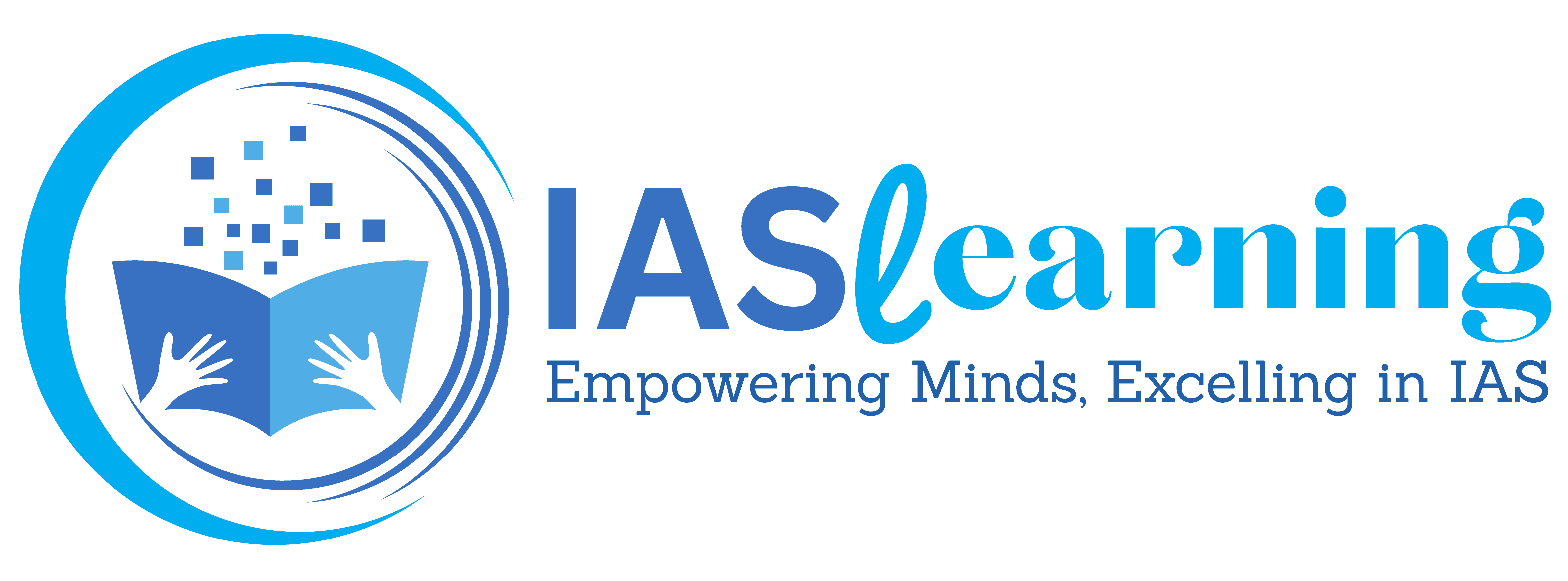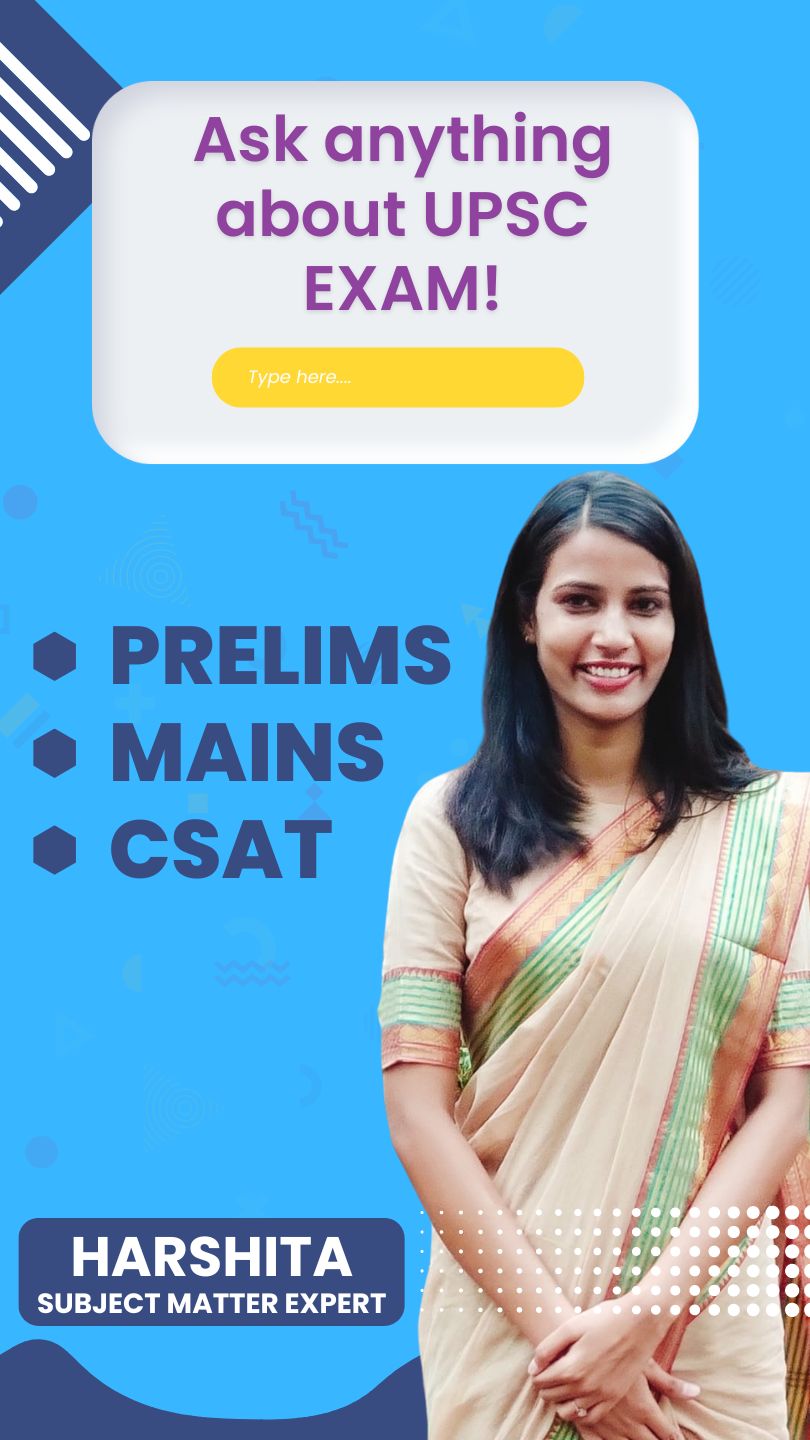Introduction: How did women organizations and feminist movements evolve in India?
The evolution of women’s organizations and feminist movements in India can be traced through several distinct phases, starting from the 19th century up to the period following independence in 1947. Here’s a brief overview of this evolution:
- 19th Century Social Reform Movements:
- The women’s movement in India finds its roots in the social reform movements of the 19th century. These movements aimed to bring about significant changes in societal norms and practices that were detrimental to women.
- Key issues addressed during this phase included advocating for widow re-marriage, banning sati (the immolation of widows on their husband’s funeral pyre), opposing child marriage, and promoting women’s education.
- Prominent reformers like Raja Ram Mohan Roy and Ishwar Chandra Vidyasagar played pivotal roles in these early efforts to improve the status and rights of women.
- Participation in the Freedom Struggle:
- Women actively participated in the Indian freedom struggle, which took place from the late 19th century to 1947. Their involvement marked a significant phase in the women’s movement.
- Several women leaders, including Sarojini Naidu, Annie Besant, and Kamala Nehru, emerged as prominent figures in the fight for India’s independence.
- The freedom movement provided women with a platform to articulate their concerns and aspirations, contributing to their political awakening.
- National-Level Women’s Organizations:
- Post-independence, the women’s movement gained further momentum with the emergence of national-level women’s organizations. These organizations focused on addressing issues related to women’s rights and social justice.
- Prominent organizations that were established during this period include the All India Women’s Conference, the National Federation of Indian Women (NFIW), and the Women’s India Association.
- These organizations championed a range of issues, including women’s education, the right to vote (franchise), challenging the practice of Purdah (seclusion of women), and advocating for individual rights and equal opportunities for women in all spheres of life.
- Sustained Advocacy and Legal Reforms:
- The women’s movement in India continued to grow and evolve through sustained advocacy and efforts to bring about legal reforms.
- Landmark legislations, such as the Hindu Marriage Act, the Dowry Prohibition Act, and the Maternity Benefit Act, were enacted to address issues related to marriage, dowry, and maternity rights.
- Women’s rights activists also played a crucial role in advocating for the inclusion of gender equality and women’s rights in the Indian Constitution.
- Contemporary Women’s Movements:
- In the contemporary era, the women’s movement in India continues to address a wide range of issues, including violence against women, workplace discrimination, reproductive rights, and gender-based disparities.
- Grassroots movements and women-led initiatives are actively challenging existing norms and working towards gender equality, both in urban and rural areas of the country.
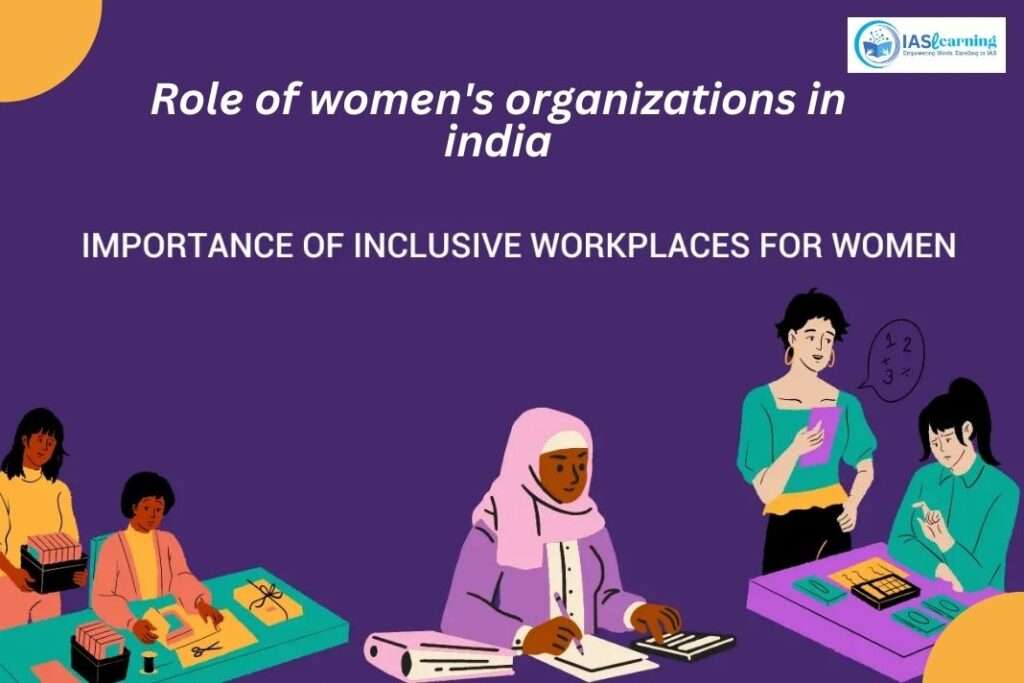
The period from 1947 to the 1960s in India
- Focus on Social Welfare (1947-1950s):
- After gaining independence in 1947, many women’s organizations, such as the All India Women’s Conference, shifted their focus towards social welfare and community service.
- These organizations worked on various social issues, including education, healthcare, and the welfare of marginalized communities. This phase marked a commitment to addressing the practical needs of women and society.
- Leftist Movements and Radical Women’s Leadership:
- The 1940s and 1950s witnessed the emergence of leftist movements in India, including the Tebhaga Movement in Bengal and the Telangana Movement in Andhra Pradesh.
- Notably, the Telangana Movement saw the rise of radical and militant women’s leadership. Women actively participated in these movements, leading to the formation of organizations like Andhra Mahila Sabha, Andhra Yuvati Mandal, and Mahila Sangam.
- These movements provided women with opportunities to engage in political activism and challenge social and economic inequalities.
- Naxalite Movement and Women’s Participation (1960s):
- The 1960s were marked by significant economic and political crises in India. During this period, the Naxalite Movement, an armed revolutionary movement inspired by Marxist-Leninist ideology, gained momentum, especially in states like Bihar and West Bengal.
- Women played a crucial role in the Naxalite Movement, providing strategic support to the revolutionaries. Many women actively joined the ranks of Naxalite groups, contributing to the revolutionary cause.
- This participation allowed women to engage with the political processes of the country and heightened their awareness of gender inequality and the suppression of women’s rights within society.
The period from the 1970s to the 1990s
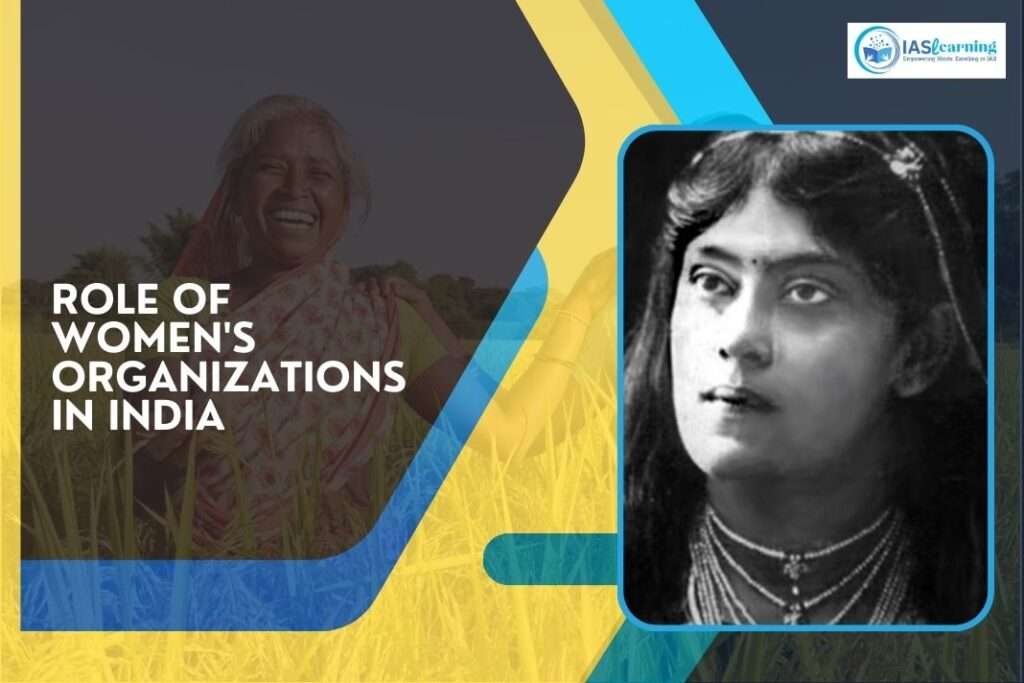
- Environmental Activism and the Chipko Movement:
- Women’s involvement in the Chipko movement, which aimed to protect forests and address environmental concerns, demonstrated their growing awareness of broader issues beyond gender-related problems.
- The movement, known for its tree-hugging protests, highlighted the interconnection between environmental conservation and the well-being of local communities.
- Anti-Liquor Campaigns:
- Between the 1970s and 1990s, women engaged in anti-liquor campaigns in various regions, including Kumaon, Garhwal, Haryana, and Andhra Pradesh. These movements aimed to combat alcoholism and the influence of liquor lobbies, which often had detrimental effects on families and women.
- Role in Civil Liberties and People’s Movements:
- The declaration of the “Emergency” in India in 1975 led to the formation of civil liberties and democratic rights groups. Women actively participated in these movements, advocating for civil liberties and democratic values.
- Women’s involvement in these movements reinforced their commitment to broader social and political issues.
- Emergence of Autonomous Women’s Organizations:
- The 1970s to 1990s saw the rise of autonomous women’s organizations with diverse ideological backgrounds. Examples include the Forum Against Oppression of Women in Mumbai, Saheli in Delhi, and Asmita in Hyderabad.
- These organizations addressed various issues, including gender-based discrimination, violence against women, and economic empowerment.
- Linkages with Political Parties:
- Women’s organizations started to establish strong links with political parties during this period, often functioning as women’s wings of these parties. For instance, the All India Democratic Women’s Association (AIDWA) is associated with the Communist Party of India (Marxist), and the Mahila Congress is affiliated with the Indian National Congress.
- These affiliations allowed women’s organizations to influence policy-making and advocate for women’s rights within the political arena.
- Anti-Dowry Movement and Broader Women’s Issues:
- The 1980s were characterized by the anti-dowry movement, which spread across the country. It extended beyond dowry-related issues to address dowry-related atrocities, domestic violence, commercialization and commodification of women, and the lack of property rights for women.
- Public discussions on sexual harassment and rape were also sparked by this movement, contributing to greater awareness and efforts to combat these issues.
In the period from the 1990s to the present day
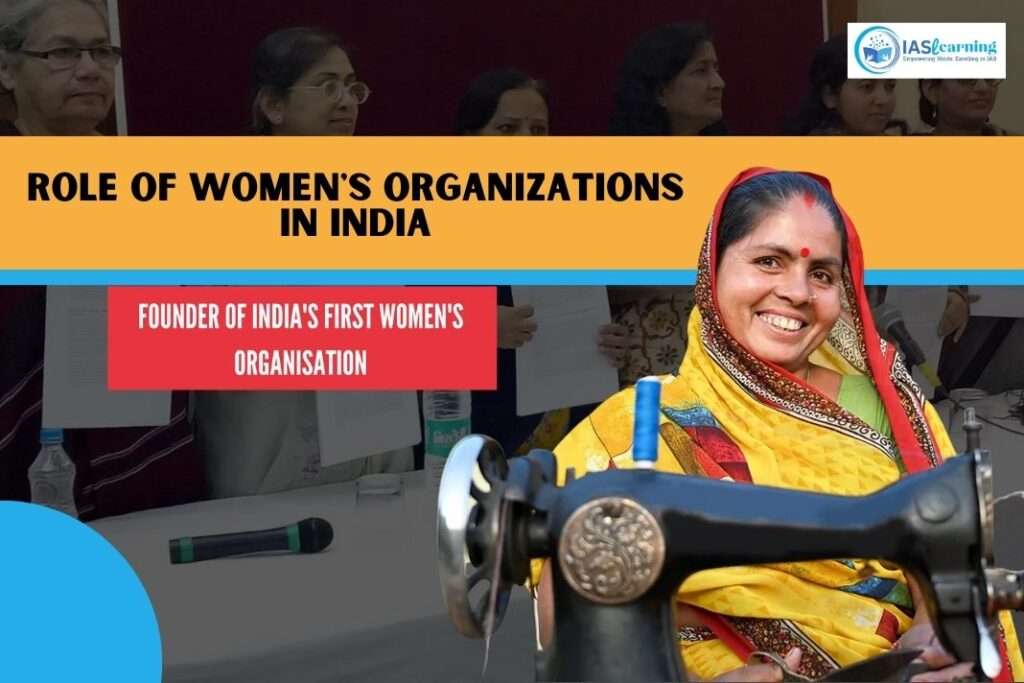
- Empowerment as the Dominant Theme:
- Empowerment has emerged as the central theme of the women’s rights movement in India. Women’s organizations, activists, and advocates have increasingly emphasized the need to empower women in all aspects of their lives.
- This empowerment includes social empowerment, focusing on issues related to gender equality, education, and health; economic empowerment, promoting women’s economic independence and livelihood opportunities; and political empowerment, advocating for women’s representation in political and decision-making processes.
- Proliferation of Women’s Organizations:
- The 1990s to the present day have seen a significant increase in the number of women’s organizations across India. These organizations work at the grassroots level, in urban areas, and within various communities, addressing a wide range of women’s issues.
- These organizations often collaborate with each other and with international women’s movements to create a collective force for gender justice and women’s rights.
- Global Perspective and Solidarity:
- The women’s movement in India is no longer confined to national boundaries. It is deeply connected to the global women’s movement, where the pursuit of justice, equality, and empowerment is a shared goal.
- Indian women’s organizations and activists actively participate in international forums, collaborations, and campaigns to address global gender issues.
- Legal Reforms and Policy Advocacy:
- During this period, there have been notable legal reforms and policy advocacy efforts to address women’s rights. Legislation related to sexual harassment, domestic violence, and women’s property rights has been passed.
- The movement continues to advocate for legal and policy changes to ensure the protection and advancement of women’s rights.
- Challenges and Ongoing Struggles:
- Despite progress, the women’s movement in India still faces numerous challenges. Issues such as gender-based violence, female foeticide, child marriage, and limited political representation for women remain significant concerns.
- Grassroots activists and women’s organizations continue to work tirelessly to confront these challenges and push for gender equality.
- Technology and Advocacy:
- The use of technology, including social media, has become a vital tool for advocacy and mobilization within the women’s movement. It allows for the dissemination of information, organization of campaigns, and building solidarity among women across different regions.
Some important women’s organizations in India, along with brief descriptions of their work and objectives:

- National Council of Women in India (NCWI):
- Founded in 1925, the NCWI was established by women from Bombay, Calcutta, and Madras who were involved in various clubs and associations.
- It focuses on areas such as religion, education, politics, and philanthropy to empower and uplift women.
- All India Women’s Conference (AIWC):
- Founded in 1926 by Margaret Cousins, AIWC has been a prominent organization advocating for women’s rights in India.
- AIWC has worked towards women’s full franchise rights and has a two-fold approach, focusing on women’s empowerment through education, fighting child marriage, and promoting women’s involvement in national service.
- Desh Sevika Sangh (National Women’s Volunteer Organisation):
- Established in various regions during the 1930s, this organization aimed to work towards self-rule for women.
- It concentrated on issues like banning foreign cloth, eradicating liquor consumption, and promoting the production of Khaddar (hand-spun and woven cloth).
- Self-Employed Women’s Association (SEWA):
- Founded by Ela Bhatt in 1972, SEWA’s mission is to provide full employment and self-reliance to women.
- It is one of the largest central trade unions in India, with a membership of over 2.1 million self-employed women workers in the informal economy across 18 states.
- Snehalaya:
- An NGO established in 1989 in Ahmednagar, Snehalaya provides support to women, children, and LGBT communities.
- The organization focuses on vulnerable groups that have experienced HIV and AIDS, trafficking, sexual violence, and poverty.
- North East Network (NEN):
- Established in 1995 as part of the Beijing World Conference on Women, NEN is a women’s rights organization.
- It continues to advocate against gender-based discrimination and works to support government policies promoting women’s rights and increasing female representation in various settings.
- Mahila Kisan Adhikaar Manch (MAKAAM):
- MAKAAM is a forum for female farmers’ rights that operates in 24 states in India.
- The organization empowers female farmers by educating them about their rights and helping them gain ownership of their livelihoods and natural resources.
Women’s organizations in India face several challenges in their efforts to promote gender equality and address women’s issues. Some of the key challenges include:
- Adapting to Rapid Social and Technical Change:
- Rapid technological advancements can pose challenges, including a lack of digital skills and limited access to technology among the marginalized communities they serve. Women’s organizations may struggle to leverage digital tools effectively to reach new audiences and mobilize support.
- Restrictive Access to Funding:
- Securing adequate funding is a persistent challenge. The Indian government has at times been restrictive in providing financial support to these organizations, and regulations regarding the use of foreign funds have become more stringent. This can hinder the financial sustainability of women’s organizations.
- Issues with Accountability:
- There is a need for greater transparency and accountability within women’s organizations. The absence of clear regulations can lead to concerns about the misuse of funds and resources, potentially undermining the credibility and effectiveness of these organizations.
- Lack of Political Will and Policy Support:
- Many women’s organizations face a lack of political will and support from the government in addressing women’s issues. This can manifest as insufficient policies and laws designed specifically to address women’s rights and a dearth of funding for programs and services that benefit women and girls.
- Patriarchal Mindset of Society:
- Deep-seated patriarchal norms and attitudes continue to be a significant challenge. This includes resistance from men to changes in traditional gender roles, reluctance among women to assume leadership positions, and opposition from communities when it comes to challenging practices that discriminate against women.
- Safety and Security Concerns:
- Women activists and organizations often face safety and security concerns, particularly in rural and conflict-prone areas. Threats, violence, and harassment can deter women from engaging in advocacy and activism.
- Intersectionality and Inclusivity:
- Recognizing and addressing the intersectionality of women’s identities (such as caste, religion, disability, and sexual orientation) is vital. Women’s organizations need to ensure inclusivity and representation of diverse voices and experiences within their work.
- Lack of Data and Research:
- A scarcity of accurate and up-to-date data on gender-related issues can hinder the evidence-based advocacy efforts of women’s organizations. Access to data and research resources is often limited.
Way Forward
- Promote Collaboration between Government and Women’s Organizations:
- The government should actively engage with women’s organizations and establish collaborative partnerships to collectively address women’s rights and empowerment issues. This collaboration can lead to more effective policies and programs.
- Provide Training and Capacity Building:
- Women’s organizations should be offered training and capacity-building programs to enhance their skills in advocacy, leadership, project management, and community engagement. This will enable them to better serve women in their communities and adapt to changing needs.
- Create a National Network of Women’s Organizations:
- Establishing a national network or platform for women’s organizations can facilitate communication, knowledge sharing, and collaboration. This network can serve as a unified voice for women’s rights and allow organizations to learn from each other’s experiences.
- Provide Legal and Other Support Services:
- To empower women’s organizations, they should be offered access to legal and support services. This can include legal aid, counseling, and resources to help them assist women facing legal challenges, domestic violence, or other forms of discrimination.
- Increase Funding for Women’s Organizations:
- The Indian government should allocate sufficient funding to women’s organizations to enable them to expand their programs and services. Adequate financial support is essential for these organizations to address the diverse needs of women and communities.
- Promote Inclusivity and Diversity:
- Encourage women’s organizations to prioritize inclusivity and diversity within their leadership, membership, and programming. This ensures that the voices of women from all backgrounds, including marginalized groups, are heard and their specific needs are addressed.
- Advocate for Gender-Sensitive Policies:
- Women’s organizations should actively engage in policy advocacy and push for the implementation of gender-sensitive policies at local, state, and national levels. This can include advocating for legislation related to women’s rights, safety, and economic empowerment.
- Raise Public Awareness:
- Women’s organizations can play a vital role in raising public awareness about gender issues through campaigns, workshops, and community outreach. These efforts can lead to a more informed and supportive society.
- Engage Men and Boys:
- Encourage women’s organizations to involve men and boys in their initiatives aimed at challenging patriarchal norms and promoting gender equality. Engaging men as allies in the women’s movement can be transformative.
- Monitor and Evaluate Impact:
- Regularly assess and measure the impact of women’s organizations’ programs and activities. This data can be used to refine strategies, secure additional funding, and demonstrate the effectiveness of their work.
